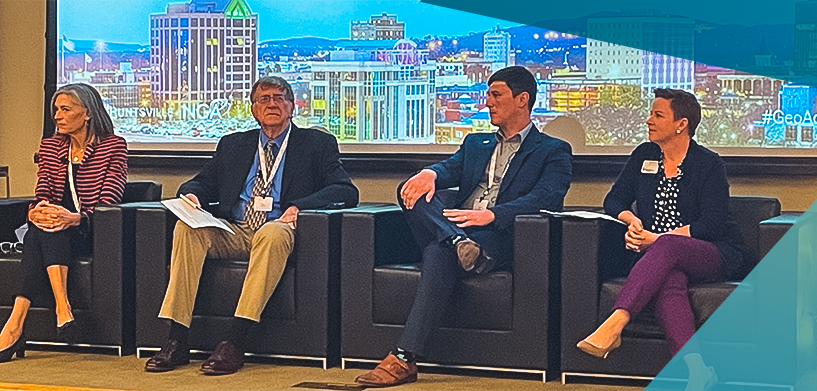In nature, there must be a healthy ecosystem for people, animals and plants to thrive together, with all the inhabitants working in harmony to assure survival.
The same concept applies to the development and advancement of geospatial technology, according to panelists at a recent Geospatial Advantage Conference held in Huntsville, Alabama.
The National Geospatial-Intelligence Agency couldn’t carry out its mission of using geospatial intelligence to protect U.S. interests around the globe without a public-private ecosystem of expertise, said Shelby Pierson, Deputy Director of NGA Source Directorate.
That ecosystem for geospatial work means government, industry and academia working together to develop technology and expand the geospatial workforce, said Pierson, the conference’s keynote speaker.
“Without this type of interdisciplinary connection, NGA would not be able to flourish,” said Pierson.
NGA has large presences in its two main hubs — outside Washington, D.C., and in St. Louis, Missouri — and has offices in Huntsville, Alabama, at Redstone Arsenal.
The key to growing and maintaining the geospatial ecosystems in those places is a strong pipeline of talent to fill the explosion of jobs being created in the government and industry sectors, conference panelists agreed.
Hexagon employs about 200 geospatial experts in Huntsville and about 50 in St. Louis that support the U.S. federal government, said Elliott Ferguson, Vice President, Geospatial Solutions, for Hexagon US Federal.
In today’s tight job market, it’s become necessary to look not just for experienced geospatial professionals, but people who have the potential to do the work.
“Before, we could find somebody who had a geospatial background or was a geographer,” Ferguson said. “Now, we’re seeing a lot of computer scientists, we’re seeing data scientists, we’re seeing people who are in computer vision or algorithm development or mathematicians. Those capabilities are applicable to what we’re doing and can actually advance us faster because it’s a broader swath.”
Ferguson himself was an environmental science major who learned GIS so he could study deforestation. Then a recruiter convinced him to use that skillset to work in the geospatial sector of the defense industry.
Another important factor in maintaining a healthy ecosystem is creating a “sense of place” for employees, Ferguson said. Places like St. Louis and Huntsville combine strong government, industry and academic presences with good quality of life and the opportunity for professional mobility, he said.
“That’s been a key component of it. People feel like there’s a connectiveness,” Ferguson said. “If something were to happen to a contract or their position at a particular place, they’re able to move about within those regions and feel like they have additional opportunities.”















